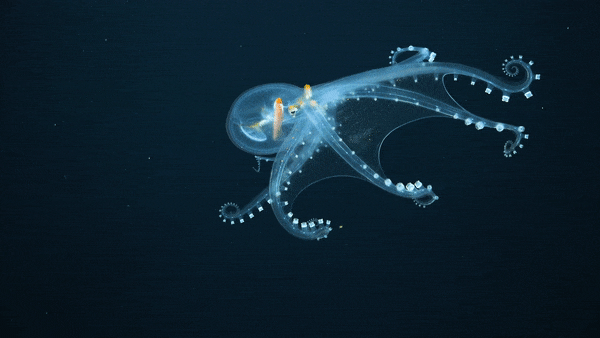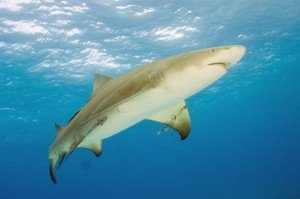The Wonderful Glass Octopus. Living At Depths Of Around 3000 Ft And Only Being About A Foot Long, These
The wonderful Glass Octopus. Living at depths of around 3000 ft and only being about a foot long, these strange little creatures are rarely seen by scientists.



More Posts from Offishialghostieaccount and Others
The body shape of a fish can tell you a lot about it! It can tell you where they like to hang out, how they hunt, what they eat, and more!
Let's use the Asian Arowana (Scleropages formosus) as an example!

Based off the rounded caudal fin (the "tail"), this fish is not a very fast swimmer
Having the dorsal fin and anal fin right near the end of the fish's body suggests it is an ambush predator
The flat head suggests it hunts at the surface
The upturned, large mouth suggests it catches its prey from below
Arowana are ambush predators that hunt at the surface!
They don't need to go very far very fast, hence the rounded caudal fin (which is the slowest moving fin)
Having posterior dorsal and anal fins are a common trait amongst ambush predator
They primarily hunt at the surface! They will sit near the surface and grab small fish, bugs, crustaceans, and even occasionally a bird!
4. Fish that catch their prey from below sometimes do it via suction. They'll open their large mouth, and as the water gets sucked in, so does anything in the water. And the larger the mouth, more water will more quickly fill into the mouth, catching larger and faster prey

There are four types of fish scales!
Cycloid scales are thin, overlap, and flexible. They're found on primitive teleosts (like minnows and carp).
Ctenoid scales have small, backwards pointed scales (known as cterns) make the fish more hydrodynamic and faster. They're found on Advanced Ctenoids (like perch and sunfish).
Ganoid scales are thick, diamond-shaped, and mostly non-overlapping. They're found on Chondrostei (like sturgeons and paddlefish).
Placoid scales are spikey and tooth-like with nerves. These are found on Chondrichthyes (like sharks and rays).
Ichthyology Notes 3/?



There are three morphologies of dorsal fins: nearly divided, continuous, and clearly divided.
Ichthyology Notes 1/?
I'd love some lemon shark facts 💛


Lemon Shark or Negaprion brevirostris
They get their name from their yellowish brown coloring. Lemon sharks, unlike the lone-shark stereotype, enjoy hanging out in groups! They even have preferred individuals to hang out with!

Lemon sharks are also one of the most well-understood shark species and this is because they do well in captivity. Additionally, most of our knowledge of shark physiology and biology stems from studies of lemon sharks!
Unfortunately, this species is nearly threatened; this is mostly due to overfishing. They're not only caught as bycatch, but are a target for some fisheries. Their meat, skin, and squalene are used for human consumption. It's estimated that between 70-90% of shark squalene harvested each year is used in cosmetics. (Make sure to do your research before buying makeup). To harvest the amount of squalene used for our consumption, almost 3 million sharks are killed every year. But there's a great new alternative source that's gaining traction: olives!
i am ghostie grimsoul, but please just refer to me as ghostie

please refer to me using she/her or they/them pronouns more information about me and this blog underneath
i am a cassmate, which makes me apathetic by nature, and apart of the vivid rainbow system, with our host being limon who is primarily active at limoncats i am a fictive from an obscure source; prism the colorful tales my source was made by kiraprismart

i am interested in fish (ichthyology) and marine biology but i am still learning about things; please tell me things you know about the subjects in my ask box as i am willing to read

to sort and filter tags, please refer to these tags: #necronotemicon entry is my normal text post tag #addition to the pages is my reblog tag #artwork is my art tag (if the art was made by me) #curses is my vent tag #contributions is my ask tag




apparently this is a thing so i drew myself on it @kiraprismart should i be tagging you?
-
 blk-intro-vert liked this · 2 weeks ago
blk-intro-vert liked this · 2 weeks ago -
 whimsicalfairie reblogged this · 2 weeks ago
whimsicalfairie reblogged this · 2 weeks ago -
 roniverson liked this · 2 weeks ago
roniverson liked this · 2 weeks ago -
 zacolyn reblogged this · 2 weeks ago
zacolyn reblogged this · 2 weeks ago -
 lil-bumble-bee reblogged this · 2 weeks ago
lil-bumble-bee reblogged this · 2 weeks ago -
 theperpetualartist reblogged this · 2 weeks ago
theperpetualartist reblogged this · 2 weeks ago -
 rolandscapes liked this · 2 weeks ago
rolandscapes liked this · 2 weeks ago -
 axl-the-whatever liked this · 2 weeks ago
axl-the-whatever liked this · 2 weeks ago -
 intentlydivided reblogged this · 2 weeks ago
intentlydivided reblogged this · 2 weeks ago -
 intentlydivided liked this · 2 weeks ago
intentlydivided liked this · 2 weeks ago -
 thatwasawkward-abiography liked this · 2 weeks ago
thatwasawkward-abiography liked this · 2 weeks ago -
 constantlydaydreamingthings liked this · 2 weeks ago
constantlydaydreamingthings liked this · 2 weeks ago -
 bob5777 liked this · 2 weeks ago
bob5777 liked this · 2 weeks ago -
 i-like-reptiles reblogged this · 2 weeks ago
i-like-reptiles reblogged this · 2 weeks ago -
 whimsicalfairie liked this · 2 weeks ago
whimsicalfairie liked this · 2 weeks ago -
 edwardelricsmissingarm reblogged this · 2 weeks ago
edwardelricsmissingarm reblogged this · 2 weeks ago -
 farouche-lark reblogged this · 2 weeks ago
farouche-lark reblogged this · 2 weeks ago -
 n0lleb0lle liked this · 2 weeks ago
n0lleb0lle liked this · 2 weeks ago -
 vachonnick liked this · 2 weeks ago
vachonnick liked this · 2 weeks ago -
 grittyghoul liked this · 2 weeks ago
grittyghoul liked this · 2 weeks ago -
 heyajoh reblogged this · 2 weeks ago
heyajoh reblogged this · 2 weeks ago -
 heyajoh liked this · 2 weeks ago
heyajoh liked this · 2 weeks ago -
 starrysymphonies liked this · 2 weeks ago
starrysymphonies liked this · 2 weeks ago -
 ellenwipley liked this · 2 weeks ago
ellenwipley liked this · 2 weeks ago -
 thaumwritesshit liked this · 2 weeks ago
thaumwritesshit liked this · 2 weeks ago -
 certainlycrescent reblogged this · 2 weeks ago
certainlycrescent reblogged this · 2 weeks ago -
 cinderhaveavibe reblogged this · 2 weeks ago
cinderhaveavibe reblogged this · 2 weeks ago -
 morriganthreecrows reblogged this · 2 weeks ago
morriganthreecrows reblogged this · 2 weeks ago -
 morriganthreecrows liked this · 2 weeks ago
morriganthreecrows liked this · 2 weeks ago -
 scumfuck1998 liked this · 2 weeks ago
scumfuck1998 liked this · 2 weeks ago -
 gobblinnips liked this · 2 weeks ago
gobblinnips liked this · 2 weeks ago -
 jdvi liked this · 2 weeks ago
jdvi liked this · 2 weeks ago -
 spiritleopard liked this · 2 weeks ago
spiritleopard liked this · 2 weeks ago -
 prince-cake reblogged this · 2 weeks ago
prince-cake reblogged this · 2 weeks ago -
 jonny-b-meowborn reblogged this · 2 weeks ago
jonny-b-meowborn reblogged this · 2 weeks ago -
 jonny-b-meowborn liked this · 2 weeks ago
jonny-b-meowborn liked this · 2 weeks ago -
 midorimuscaria reblogged this · 2 weeks ago
midorimuscaria reblogged this · 2 weeks ago -
 sladez reblogged this · 2 weeks ago
sladez reblogged this · 2 weeks ago -
 sladez liked this · 2 weeks ago
sladez liked this · 2 weeks ago -
 majjiktricks liked this · 2 weeks ago
majjiktricks liked this · 2 weeks ago -
 a-fandomonian liked this · 2 weeks ago
a-fandomonian liked this · 2 weeks ago -
 unperfect-porkchop liked this · 2 weeks ago
unperfect-porkchop liked this · 2 weeks ago -
 succulentsandtoebeans reblogged this · 2 weeks ago
succulentsandtoebeans reblogged this · 2 weeks ago -
 succulentsandtoebeans liked this · 2 weeks ago
succulentsandtoebeans liked this · 2 weeks ago -
 functionalmoron reblogged this · 2 weeks ago
functionalmoron reblogged this · 2 weeks ago -
 functionalmoron liked this · 2 weeks ago
functionalmoron liked this · 2 weeks ago -
 quite-possibly-haunted liked this · 2 weeks ago
quite-possibly-haunted liked this · 2 weeks ago -
 gattskin liked this · 2 weeks ago
gattskin liked this · 2 weeks ago

she/they18 internally - bodily a minorprofile picture by kiraprismartbanner by fanny-hs
21 posts




